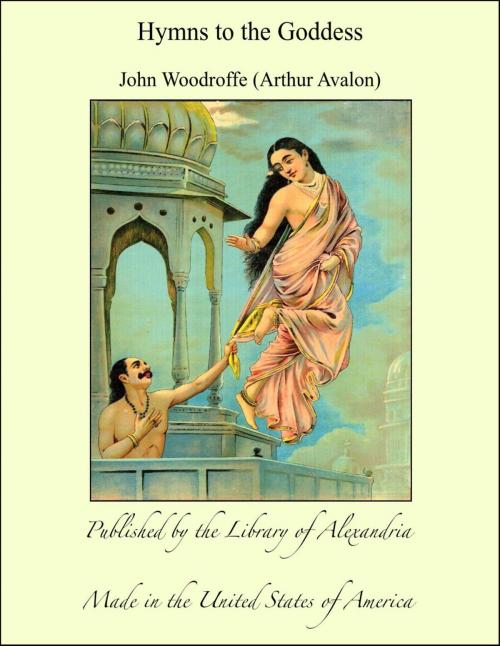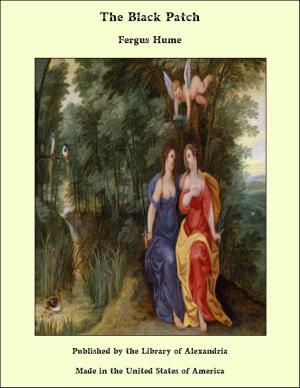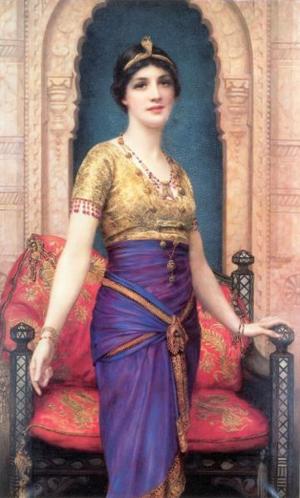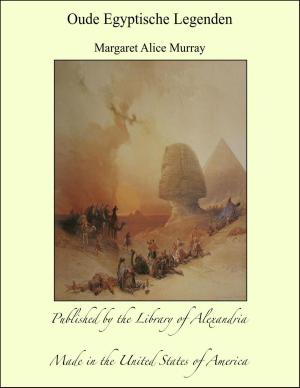| Author: | John Woodroffe (Arthur Avalon) | ISBN: | 9781465581129 |
| Publisher: | Library of Alexandria | Publication: | March 8, 2015 |
| Imprint: | Language: | English |
| Author: | John Woodroffe (Arthur Avalon) |
| ISBN: | 9781465581129 |
| Publisher: | Library of Alexandria |
| Publication: | March 8, 2015 |
| Imprint: | |
| Language: | English |
THE Goddess or Devī (as the Hindus call Her) is God (as the Western worshippers address Him) in Its Mother aspect. The latter not uncommonly deem such attribution of feminine quality to be "heathenish"; but this condemnation (for the criticism has, of course, this intendment) is itself singularly foolish in that it is thereby implied that of two sets of terms (neither of which is in its strict sense applicable to the Deity as the of forms), one is, in fact, a more correct description than the other. In the Navaratneśvara it is said: "That Devī, who is existence, consciousness, and bliss, should be thought of as a female or as a male, or as pure Brahman. In reality, however, She is neither male nor neuter (that is to say, that She is not bound to any particular form)." No one contends that the Brahmatattva in the supreme abode beyond appearances is masculine as opposed to feminine, or the latter as contrasted with the former. Like all else in this matter, words are but the babbling endeavour of our plane to express that which is above it. It is not easy, then, to explain the condemnation except upon the assumption that those who pronounce it think their mother's sex to be inferior to their own, and that thus Deity is unworthily described by any other terms than those of masculine excellence. But Hindus, who ever place the name of mother before that of father, and to whom garbha dhāraapoābhyām pitur mātā gariyasi, have no partiality for such mistaken notions. On the other hand, it is possible that they might not understand the Christian expression "Mother of God," nor approve it even after they had learnt the limited and special sense which theology gives to this epithet. The Tāntrika would least of all admit the insufficiency of the conception of God as Mother. For the Devī manifests in his own mother, in his prakti (as he calls his wife), and in all women. As the Kubjikā Tantra says: "Whosoever has seen the feet of woman let him worship them as those of his guru" (Strinām pādatalam dritvāguruvadbhāvayet sadā). Whilst male and female are both Her aspects, yet Śakti is, in a sense, said to be more revealed in the female than in the male form. And so the Muamāla Tantra says: "Wherever there is a śaktī (female), there I am." On account of this greater manifestation, women are called Śakti. From this, however, it must not be supposed that Śakti is less present in such forms as Śiva and Ka and others. If, as the author of the Tantra Tattva says, a sādhaka who is a worshipper of the Kamūrti desires to see Him as Kālī, Bhagavān, who fulfils the desires of devotees, will assume that form. All forms come into existence upon the manifestation of consciousness in the play of Her whose substance is consciousness.
THE Goddess or Devī (as the Hindus call Her) is God (as the Western worshippers address Him) in Its Mother aspect. The latter not uncommonly deem such attribution of feminine quality to be "heathenish"; but this condemnation (for the criticism has, of course, this intendment) is itself singularly foolish in that it is thereby implied that of two sets of terms (neither of which is in its strict sense applicable to the Deity as the of forms), one is, in fact, a more correct description than the other. In the Navaratneśvara it is said: "That Devī, who is existence, consciousness, and bliss, should be thought of as a female or as a male, or as pure Brahman. In reality, however, She is neither male nor neuter (that is to say, that She is not bound to any particular form)." No one contends that the Brahmatattva in the supreme abode beyond appearances is masculine as opposed to feminine, or the latter as contrasted with the former. Like all else in this matter, words are but the babbling endeavour of our plane to express that which is above it. It is not easy, then, to explain the condemnation except upon the assumption that those who pronounce it think their mother's sex to be inferior to their own, and that thus Deity is unworthily described by any other terms than those of masculine excellence. But Hindus, who ever place the name of mother before that of father, and to whom garbha dhāraapoābhyām pitur mātā gariyasi, have no partiality for such mistaken notions. On the other hand, it is possible that they might not understand the Christian expression "Mother of God," nor approve it even after they had learnt the limited and special sense which theology gives to this epithet. The Tāntrika would least of all admit the insufficiency of the conception of God as Mother. For the Devī manifests in his own mother, in his prakti (as he calls his wife), and in all women. As the Kubjikā Tantra says: "Whosoever has seen the feet of woman let him worship them as those of his guru" (Strinām pādatalam dritvāguruvadbhāvayet sadā). Whilst male and female are both Her aspects, yet Śakti is, in a sense, said to be more revealed in the female than in the male form. And so the Muamāla Tantra says: "Wherever there is a śaktī (female), there I am." On account of this greater manifestation, women are called Śakti. From this, however, it must not be supposed that Śakti is less present in such forms as Śiva and Ka and others. If, as the author of the Tantra Tattva says, a sādhaka who is a worshipper of the Kamūrti desires to see Him as Kālī, Bhagavān, who fulfils the desires of devotees, will assume that form. All forms come into existence upon the manifestation of consciousness in the play of Her whose substance is consciousness.















